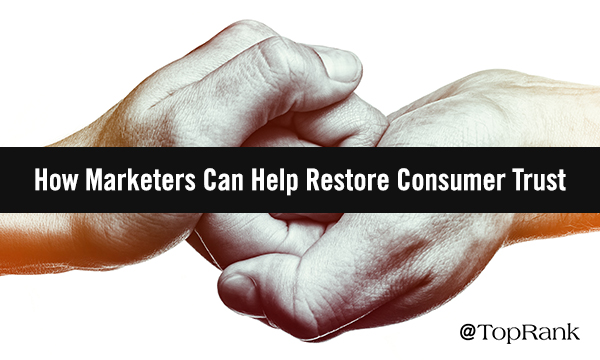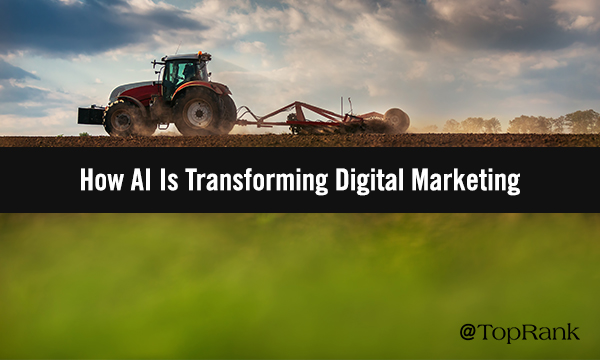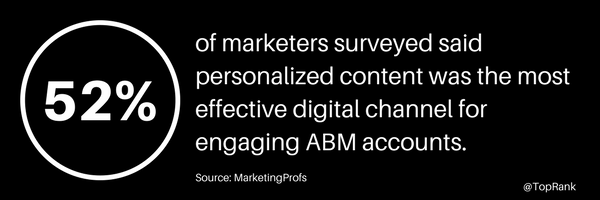Welcome to WordPress. This is your first post. Edit or delete it, then start writing!
Can Your Blog Make Money? Here’s How to Predict Your Chances for Income.

In a nutshell, you need to address the three areas of profitability: direct sales, advertising and affiliate marketing.
February 22, 2018 5 min read
Opinions expressed by Entrepreneur contributors are their own.
We’ve all heard of the many entrepreneurs who made it big thanks to a popular blog; they either used their blog as an extension of an existing business, or started blogging as a side project that ended up earning significant revenue.
Related: How to Start a Blog and Make Money Online
Knowing about the free website-building tools out there and the (perceived) ease of starting a blog, you’ve likely given this strategy some thought.
Would a blog actually help you make money, though? Ultimately, the answer revolves around three factors:
1. Monetization. What’s your plan to make money from the blog? You have many options, depending on your audience, intent and other ventures.
2. Traffic. No matter what monetization angle you choose, you’ll need ample traffic to support it. Your blog’s ability to generate that traffic is a significant indicator.
3. Upkeep and longevity. Though your blog will be free for you to create in most cases, it will cost time (and sometimes money) to keep your blog running. Your profitability will depend on what you invest in maintenance and improvement.
Want to know more? Here are the details.
Related: 5 Ways to Build an Audience for Your Blog and 10 Ways to Make Money Once You Have
Monetization
Let’s start with the different ways you can monetize your site:
Lead generation. If you already have a consulting or B2B business, you’ll need leads to close sales. A blog with enough calls to action should direct your readership to your contact page and earn you more appointments, which you can potentially close as sales. With lead generation, your blog will serve as an extension of your business rather than an independent revenue-generating opportunity.
Direct sales. If you have something to sell, a blog can support those sales. For example, you might open a store to sell apparel, crafts or even an ebook. You could then use your blog to provide value to your potential customers, eventually forwarding them to product pages to consider making a purchase.
Advertising. If you have sufficient traffic, you won’t have to sell anything to your readers to make money; instead, you can generate revenue by attracting advertisers, who will pay you based on the volume of traffic you receive, or (more likely) based on the number of people who click on the ads you place. In some cases, ads can annoy readers, so be careful when you place those early ones; and keep a fair balance of ad content versus free, valuable content.
Affiliate linking. You can also make money through affiliate links, meaning links to other people’s products and services that you include in your blog content. You’ll get a percentage of any sales that your links generate, and again, with sufficient traffic, that could represent a substantial stream of revenue.
Traffic
No matter which approach you choose, you’ll need adequate traffic to earn enough value from it:
Targeting. You’ll need to start with the right target audience. Ideally, you’ll choose a specific target niche that’s wide enough to have a large readership but narrow enough to avoid significant competition. That way, you can earn the most relevant followers while dealing with the least amount of competition. Make sure to research your target audience and existing competition before proceeding; try to find something unique that people really need.
Value. You then need to find a way to provide those users with value. Usually, that means providing them with the best content you can produce and that is timely, unique, helpful, thoroughly researched and well written. The more value you offer your readers, the more they’ll naturally be attracted to you, and the more they’ll spread the word of your existence.
Promotion and support. Even if you have a strong content base, and a hypothetically valuable niche, you won’t get far unless you spend time promoting and syndicating your material. You need to build up an initial audience base and encourage them to spread the word about you, building your brand reputation and circle of influence simultaneously. There are many ways to do this, including search engine optimization (SEO), social media marketing and paid advertising, but you’ll need to use at least one of these strategies to start building audience momentum.
Upkeep and longevity
If you want your revenue stream to last, you’ll need to make investments to keep your blog running and relevant for the foreseeable future (and ensure those costs don’t eat into your profitability):
Relevance longevity. You’ll have to keep your design and content updated to appeal to your target audience, whose interests may change — especially if you have significant competitors encroaching on your territory. You need to be prepared to do near-constant tweaking.
Ongoing costs. You’ll probably have to pay for things like hosting, marketing and advertising, so make sure you build those expenses into your long-term profitability plan.
Ongoing time investment. Creating new content, engaging with your followers and building your reputation is going to take several hours of work every week. Without that investment, your blog will be unable to sustain itself.
Related: How To Make Money From Blogging
So, can your blog make money? If you address all of the above points confidently, and walk away feeling that you’ve conquered all three areas of profitability, there’s nothing stopping your blog from being profitable. It’s still a long-term strategy, and one that might not pay off right away, but with a strong foundation, you’ll be ahead of the vast majority of new online entrepreneurs.
How to Drive Marketing Results When You’re Facing Budget Cuts

You need to get a whole lot better at SEO to get more bang for your marketing buck.
February 22, 2018 5 min read
Opinions expressed by Entrepreneur contributors are their own.
Budget cuts may be a necessary evil in uncertain economic times. But even declines in funding don’t take the pressure off your marketing team to deliver results. If anything, hitting key metrics becomes even more important to your company’s future.
Related: 4 Proven Strategies to Get Rank-Boosting Links to Improve Your SEO
Along the way, there’s a personal cost: Stress results when you’re afraid your head is on the chopping block, and you aren’t certain what kinds of resources you have to work with.
If you find yourself in this position, the advice below — based on my years of engagement with companies in these financial circumstances — may help.
Be clear about your goal during tough times.
The first thing you need to know is that, during tough times, it isn’t just your tactics and strategies that need to change. Your whole approach to marketing needs to change, as well.
Related: 55 Must-Know SEO Tricks for Business Websites (Infographic)
So, rather than stretching and testing new channels, your goal should be to take the ambiguity and risk out of marketing. Learn how to pull data insights out of the information you have in order to achieve results.
Here are six ways to do that . . .
1. Put out the fires first.
Start by proactively identifying any past marketing strategies that could put your future profits at risk.
As an example, I recently worked with a company that had hired a different SEO agency in the past. Unbeknownst to the company, the old agency ran a black-hat back-linking campaign which pointed thousands of spam links to the client company’s site.
The company began to notice the results when the strategy was first executed; but the company’s leaders were put into a precarious position, since 85 percent of their customers were coming from organic search. At best, they knew their links would be devalued at some point in the future, causing them to fall in the rankings and lose business once the links were removed.
At worst? They were risking penalties that could literally put them out of business.
So, don’t let this happen to you; stay on top of this risk. Fix problems like these before you invest in more proactive marketing, prioritizing them based on both their likelihood of occurring and the potential impact they could have on your business.
2. Rethink the way you do SEO.
While we’re on the subject of SEO, whether you’re facing budget cuts or not, it’s time to start looking beyond keyword research.
Look at the questions being asked in real time to understand your customers’ linguistics and the pain in their voices. Cross-reference what you’re seeing with Google Trends and PPC data. By getting better at honing in on the language your customers are using, you’ll be able to laser-target the strategies you execute and get more bang for your SEO buck.
3. Make more informed content decisions.
Be as critical about your content investments as you are with your SEO. There’s a ton of information out there. Get as much of it as possible before coming up with and executing on content ideas.
See which websites in your industry have the greatest impact in terms of voice. Try to see why things are ranking well. Understand what your content needs to achieve in order to be successful. Reverse-engineer content that’s performing well, so that you can be certain that there’s a hungry audience already looking for the work you’re about to produce.
4. Look for strategies that pull double duty.
No matter how you decide to invest in SEO or content, look for opportunities to maximize the value of your marketing investments.
Which content pieces do you have that can be repurposed into new formats? Which ones can be submitted to new publications, online or offline? How can you work existing content into your lead-nurturing sequences?
The more uses you can get out of a single content asset, the lower your average cost per use will be.
5. Get more comfortable with your data than ever before.
I mentioned the importance of data above, but the truth is that when budget cuts are in the works, you have to be able to justify the value of every decision you make. That means knowing your:
-
Organic traffic click-through rate (CTR)
-
PPC cost-per-click
-
Average customer acquisition cost (CAC) by channel
-
Average conversion rate by channel
-
Customer lifetime value (LTV) by channel
There are plenty of different tools and tutorials online that will help you find these numbers. There’s no excuse not to use them.
6. Bring the right partners on board.
Finally, understand that budget cuts don’t necessarily mean “DIY’ing” your marketing. You may actually get better results — whether in terms of greater revenue, speed or something else — if you bring on specialists, versus trying to learn something new from scratch.
Related: 7 Dreadful Marketing Mistakes to Avoid in 2018
It’s up to you to have a clear understanding of your organization’s metrics and the strategies necessary to move those forward. After that, consider carefully whether you or a new partner will be the best person to get there.
What other tips would you add, based on how you’ve driven marketing results when facing budget cuts? Leave me a note below with your thoughts:
Transcript of How to Build Your Team, Plan Your Exit and Create Your Legacy

John Jantsch: This episode of the Duct Tape Marketing Podcast is sponsored by Podcast Bookers. Podcastbookers.com
Podcasts are really hot, right, but you know what’s also really hot? Appearing as a guest on one of the many, many podcasts out there. Think about it: Much easier than writing a guest blog post, you get some high quality content, you get great back links, people want to share that content, maybe you can even transcribe that content. Being a guest on podcasts, getting yourself booked on podcasts is a really, really great SEO tactic, great brand-building tactic. Podcast Bookers can get you booked on two to three to four podcasts every single month on autopilot. Go check it out. Podcastbookers.com
Hello and welcome to another episode of the Duct Tape Marketing Podcast. This is John Jantsch and my guest today is Scot Hunsaker. He is the author of a book we’re gonna talk about today called Heroic Ownership: Build Your Team, Plan Your Exit, and Create Your Legacy. So Scot, thanks for joining us.
Scot Hunsaker: My pleasure, thanks for having me.
John Jantsch: So, let’s start with ‘what is heroic ownership?’ Let’s define the term.
Scot Hunsaker: Well, really what it is, is an answer to an observation I saw with entrepreneurs and small businesses, and that is 66% of companies close their doors when the current leadership team leaves. And so what I was seeking to was to explain the why and the how to make that number smaller. And what it takes is heroic ownership. It takes thought, it takes planning, and it takes responsibility, because think about the number of lives that entrepreneurs touch. And it’s a tremendous privilege, but also it’s a tremendous responsibility. We live so much in the day of our businesses, I’m trying to suggest that we look a little further down the road.
John Jantsch: So you have successfully exited business, so do you want to tell us about that experience?
Scot Hunsaker: Sure. So I actually purchased one of my father’s businesses, it was an engineering firm. And my father was a very successful entrepreneur and businessman. Well what I observed in his journey was that he touched everything and controlled everything. He was very good at it, much like a lot of entrepreneurs, was extremely good at what they do. THat’s why they’re successful. But what he wasn’t good at was transferring that institutional knowledge and business savvy to the rest of the team. So when it came time for him to step out, there was really nobody prepared to be able to continue that legacy. I was able to do that, but very early I started trying to create a team and transferring that institutional knowledge and business savvy to the organization, so it wasn’t dependent upon one person.
I had one of my friends describe it this way: How many business leaders do you know that have a horse that only one rider can ride? In other words, the owner or the founding owner. And so it’s really about transferring that institutional knowledge and business savvy of the organization. So it can live on for multiple generations and continue the legacy, take care of the employees, take care of the customers, and create a liquidity event for the present ownership so they can view it as a success as well.
John Jantsch: Now you have, since exiting your own business, you’ve started a company to teach people just how to do this.
Scot Hunsaker: I have, but I kinda stumbled into it. My plan was actually to go lead a ninth company. I’ve had the privilege of leading eight companies. To go lead a ninth company and kinda do what I had done before, and that’s find a company with a proven product, but maybe a 1950s management style and no succession plan, and do what I’d done before; kinda flip the house, you might say, you know the reality television show, but only with companies. But what happened was, I started talking to some of my peers. They were a little older than me, I was 49 when I sold my last company. And they said, “Scot, you know I’m 10 years older than you and I haven’t even started. How do I do it?” And that’s what caused me to create Ardent, which is the company that I’ve created to help turn your employees into owners. And it was also the driver for writing the book, Heroic Ownership. Build your team, plan your exit, and create your legacy is kinda the message there.
John Jantsch: So I’m gonna go right with the middle part of it, because I think that’s a part that I think … not to suggest that’s any more important than the other two parts, but the ‘plan your exit’ is the one that’s probably got a lot of heartburn for a lot of business owners because, you talk about transferring to ane executive team or a leadership team. There’s a whole lot of businesses that don’t even feel like they have that, a leadership team or an executive team, but they’re gonna close the doors on a shop one day because they want to retire, and it’s basically gonna be a pile of sand. So how do you fight that? When do you fight that? When do you start trying to figure out your exit?
Scot Hunsaker: Yeah, you know a lot of owners want to start with the exit. And that’s great, and I respect that, but the reality is, if you don’t put the pieces in place you don’t have anything to implement through your strategy. You know, we can’t predict the future, so I think we have to create as many paths as possible to go forward. So the strategy outline in the book is five steps and I’ll hit them real briefly: One is authentic conversations. How are you gonna teach the team to understand what it means to lead the organization? In other words, how are they gonna anticipate what needs to happen?
Two is how are you gonna find the leaders? Instead of picking them, maybe let them become natural leaders and self-evident.
Three is institutional knowledge. We store most of our business information in our head, and that’s probably the worst place to store it. How are we gonna get it out of our heads into the organization?
And then the fourth is teaching them how to keep that information current, because all that information comes with a ‘born on’ date.
Now after you’ve done those four steps it’s only then that you can really talk about ownership, because who in their right mind is going to sit down and have a conversation about ownership if they don’t have the confidence and the wherewithal to push all their chips in and betting on your company, that they’re gonna be successful in leading it? So you really need to have those previous steps before you can have the succession planning steps or else they’re gonna be in over their heads and they’re gonna be very leery about entering into that dialog with you, because they’re not gonna be able to have a knowledgeable conversation with you. You’re gonna know a lot more than they know.
John Jantsch: Yeah, I think a lot of companies sit back and watch the news headlines and, you know, XYZ Company acquired by Big Corporate Company, and it’s a big splash and the founders make all kinds of money, but really we’re talking about somebody who, most companies, if they are sold, it’s because they’ve groomed somebody to buy that company. I think that that is, your first point of ‘build your team,’ it’s almost intentional to build their team with exit in mind, isn’t it?
Scot Hunsaker: Yes, I totally agree with you, but I also point out that we really can’t predict what the future’s gonna be. Think about the number of people that we’re planning to exit their business in 2008 when the recession hit, and they’re still trying to recover from it. What we have to do is create an umbrella with a lot of different things can happen five, ten years from now, so we have the flexibility to be able to adapt and change to what’s facing us that we don’t even understand or anticipate today. But we want to create the capacity to be able to make it successful.
John Jantsch: So another Missourian is cited in your book, Jack Stack, who I’ve been a longtime fan of and I think he was one of the first people to very publicly start preaching this idea of ‘owner mindset,’ of teaching everybody the numbers and treating everybody as though they’re an owner with the idea that even if you don’t have an Aesop setup or something, that everybody is making decisions like an owner. That’s really a culture thing, isn’t it?
Scot Hunsaker: It is. I would even say it’s become more important with some of the generational challenges we’re having as owners today and leaders today. Because Millennials today are looking for an environment where they can be, they’re constantly learning. They’re looking for a mentor or coach. They want to have ownership in the [inaudible 00:08:37] and participate in that. You know, 20, 30 years ago we just got the memo, and we were just there to do merely what we were being told. Today’s labor force won’t tolerate that. They want to be engaged, they want to be interactive, they want to be part of the conversation. And these are just sound business principles that are becoming more and more important today to be successful.
John Jantsch: I think one of the hardest things for a lot of business owners, and I’m not saying this is right, but it’s just human nature, is that they started this baby, they grow it, they can’t ultimately trust anybody else to do it like them, so how do you get past that trust and control issue?
Scot Hunsaker: Well that’s where a lot of discipline becomes in. Because you’re right; I see CEOs kinda think about that transition in two ways. The old style, which there’s still a lot of it around, is “Here’s my company. This is my baby, it’s perfect. Now here it is. Don’t change a thing, and don’t screw it up.” And the model that I think is more viable is this one, it’s “Here’s my company. This is the best I could make it and I trust you to make it even better.” Really the second one, to me, is the only one that is a sustainable model to be able to carry it on, because that first one will only last until something changes, and as soon as something changes the wheels come off of it. And then it doesn’t work out for anybody.
John Jantsch: Yeah, and as cliché as it sounds, you get no buy-in in that kind of a situation. I mean, people are ultimately picking up a paycheck and they’re not incentivized to make things better and so consequently that, it just sort of withers, I think, and dies. One of the things you talk about, could you talk about this ‘authentic conversations’ and constantly getting input from employees, and you actually have a pretty good explanation of employee surveys; how do you do that in a way, and again, it probably is a cultural thing, but how do you do that kind of, get that kind of feedback in a way where you get real, authentic, valuable information?
Scot Hunsaker: Well, let’s talk a little bit about what the purpose is. The purpose of this conversation is to understand what’s going on in our organizations. I use the example of a beach ball; if I’m holding a beach ball up in front of the leadership team we all see it from a different perspective. It’s not important that we agree on what color we’re seeing, it’s important that we understand how we each see it. So there’s a lot of business tools out there that are gonna allow us to have authentic conversations about how we view the issues inside the company. One is the corporate dashboard, you talked about Jack Stack. One is an employee survey.
I was a big fan of the Baldrige survey, it was a way of using a statistically valid model to kind of ask questions, to make it valid and to get buy-in, I think it’s really important you share the results with the team. We actually shared a number of years’ results and we could identify what we’re good at and what we needed to work on. We also looked at customer surveys, so the employee survey’s looking inside out, the customer survey is looking outside in.
You know what’s really interesting, one of the things we also did is when were interviewing a new candidate, we shared our dashboard. We shared our employee and our customer surveys and it allowed us to stand out instead of blend in from all of the other companies that they were considering. So this isn’t just good stuff for inside our company, this is good stuff to attract the best of the best in the industry.
John Jantsch: One of the things that I have seen in some organizations that the leadership gets very gung-ho about, this idea of ‘owner mindset’ and ‘building leaders’ and ‘everybody’s got a voice,’ and ultimately they’re, I don’t know what percent, let’s say 10% of the folks are like, “I don’t really want that. I want to come, I like doing my job, I like being able to interact with the data or whatever it is that I do, but I don’t really want to go to the company leadership meeting and give my input.” How do you deal with that if that exists?
Scot Hunsaker: Are you saying that the individual doesn’t want to share [crosstalk 00:12:50] or the leadership doesn’t want to hear?
John Jantsch: Not so much share, just doesn’t want the responsibility. They want to be told what to do, they want to do their job, they like, I think you use an example in the book of an engineer in one of your organizations that didn’t really want to be part of the leadership team. They just wanted to do their job.
Scot Hunsaker: And you know I find that too, and I’m less, I struggle less with how to get that person in the old quote, “the right seat on the bus” type of a thing. To me, I find it much more challenging “how do you identify those that have the will and the ability to lead and then nurture and grow them and help develop them to achieve their potential?” That person that’s just gonna be that Steady Eddie that always gets the job done, in my world I’ve been pretty successful in just seeing them go on autopilot. Because they’re gonna get in their groove and they’re just gonna do their thing. But what I’m really looking for is I’m mining for gold. Think of it this way: What does a coach on a professional sports team do? Does he spend most of his time with the B and C players? Or does he spend most of his time with his A players? I would submit he spends most of his time with his A players, trying to figure out what they’re doing right, then share that with the B and C players. I think CEOs can learn a lot from professional sports teams about how they’re led.
John Jantsch: You have participated in that family business, you talk about your father and his businesses and your relationship in those businesses. There are a lot of family businesses out there. Does that add a whole other dimension that has to be figured out and managed?
Scot Hunsaker: I think family businesses have some unique components to it, and one of the rules of thumb that I start with in family businesses is something called, I call the Thanksgiving Test. In my world I think it’s more important that we keep the family unit speaking, that would allow, we can sit down for Thanksgiving Dinner together without having tremendous upheaval. So I think as we start these conversations, you know, we want to keep in mind that we don’t do anything to upset the family dynamic, at least that’s my value set. Not everybody’s is like that. But let’s focus on what’s most important and understand what that definition of success looks like and go down that path. In my journeys what I have found is the most open and honest and transparent you are, the easier it is to get through it.
And this one may be a little awkward, but it’s much better to have these conversations when the founder is still able to participate because when the founder’s no longer able to participate everybody kinda has their own agenda. But when the founder’s there, he’s able to share his or her perspective about what they would like to see in the business and what they would like to see for the family. So it’s not just the survival of the fittest and working it out the other way.
John Jantsch: So the final point in the book or the section in the book, really, is this idea of creating a legacy. I’m wondering if, and I’m probably projecting a little, my own business I’ve owned almost 30 years, and I’m not sure I thought about ‘legacy.’ I thought about what I liked doing, I thought about the purpose of the business, but as I am now in my mid-50s I’m starting to think, “Huh. What is the legacy that I would like to leave?” Is that kinda a typical evolution in your experience?
Scot Hunsaker: Well again, I think it’s a purposeful one. One of the, I’ll give you two quick examples: One is that I think we all are very keen and focused on creating a mission and values statement for our companies, but I would strongly encourage your listeners to think about what is their personal mission and values statements for them as individuals. When they look back on their career as leaders, will they be proud of what they’ve accomplished? My guess is they’ve probably done a great job at accomplishing their strategic plan and mission and goals of the company, but is that as reflective of who they are and what they are gonna be proud of when they look back on their career?
I have a dear friend that I shared this book with and some other things and he was in the venture capital space and those types of things. At the end of one of our conversations he said, “you know Scot, I’ve probably had an intimate role with 30, 40 businesses, but I’m not sure I’ve ever created a legacy.” And it may or may not be okay, you just have to decide for you, as a business leader and somebody that touches a number of lives, what’s your definition of success? What’s gonna make you proud when you look back on your leadership tenure? That you felt you did good work?
John Jantsch: I think a lot of business owners, again, I may be projecting a little bit here, we’re so focused on that moving horizon that keeps moving farther away as we move to it, because we have bigger and bigger goals, and I think sometimes we forget to turn around and look how far we’ve come.
Scot Hunsaker: Yeah, I also think entrepreneurs think they’re indestructible and they’ll last forever too, so we don’t often get around to having these kinds of conversations with ourselves and our peers, but it’s critically important. It impacts not only us, it impacts our families and all those that work for us and all their families. So it’s a tremendous privilege and it’s a tremendous responsibility.
John Jantsch: Scot, where can people find out more about you and your work at Ardent as well as pick up a copy of Heroic Ownership?
Scot Hunsaker: Well Heroic Ownership is available on Amazon, it’s also on Kindle and I’m working on an audiobook version. My website is ardentgroup.com and they can learn all about me there as well as opportunities to participate in their groups or speaking at events and those types of things also.
John Jantsch: Thanks so much for joining us and you’re just across the state in Missouri, so maybe I’ll run into you out there on the road someday.
Scot Hunsaker: Fantastic, John. Thank you so much for having me.
How to Build Your Team, Plan Your Exit and Create Your Legacy
Marketing Podcast with Scot Hunsaker
Podcast Transcript

![]() My guest for this week’s episode of the Duct Tape Marketing Podcast is Managing Partner of Ardent, Scot Hunsaker. Ardent’s mission is to help CEOs and Business owners prepare for their ultimate transition with a particular focus of teaching employees how to think like owners. He and I discuss his book, Heroic Ownership.
My guest for this week’s episode of the Duct Tape Marketing Podcast is Managing Partner of Ardent, Scot Hunsaker. Ardent’s mission is to help CEOs and Business owners prepare for their ultimate transition with a particular focus of teaching employees how to think like owners. He and I discuss his book, Heroic Ownership.
Hunsaker purchased a small engineering firm, Counsilman-Hunsaker, operating as a sole proprietorship from his father. During his tenure as CEO and owner, he grew Counsilman-Hunsaker’s revenue by a factor of 10, quadrupled the number of employees, opened 4 new offices in the US and went from being licensed to operate in 10 states to operating in all 50 plus 3 Canadian provinces.
He sold Counsilman Hunsaker to the employees for cash in 2012. He has spoken on the topic of ownership transition and ownership thinking across the US and internationally. He is also the author of 30 published articles and serves on several boards of directors.
Questions I ask Scot Hunsaker:
- What is heroic ownership?
- When should you start planning your exit strategy?
- Should you build your team with your exit in mind?
What you’ll learn if you give a listen:
- How to let go of control and develop enough trust to have somebody take over your business for you
- How to get valuable input from employees
- What goes into creating a legacy
Key takeaways from the episode and more about Scot Hunsaker:
Like this show? Click on over and give us a review on iTunes, please!
Subscribe: Apple Podcasts | Android |
To Be Successful, Your Brand Needs a Clear, Simple Focus

Think about Volvo, which stands for safety, or Ferrari, which is all about speed and excitement.
February 22, 2018 1 min read
Opinions expressed by Entrepreneur contributors are their own.
Entrepreneur Network partner C-Suite’s Jeffrey Hayzlett sat down with David Haigh, CEO of Brand Finance, to share his insights on what all successful brands have in common. He also sat down with Matt Prechern, EVP and CMO of HCL Technologies, at his offices in New York City, to talk about the steady increase of HCL’s brand and to reveal the secret about what’s made the company brand so successful.
Related: Your Competitive Advantage Is Not Your Product — It’s Your Story
In a World of Diminishing Trust, Data-Driven Marketers Can Turn the Tide

My first encounter with marketing data malpractice came at a young age. I wasn’t old enough to understand what was going on at the time, but my dad loves to tell the story. As I’ve gotten older, the humor and timeless relevance of this anecdote have struck me more and more.
It was the mid-90s. We received a piece of mail at our house addressed to Lucy Nelson. It was a credit card offer from one of the industry’s heavy hitters. Nothing out of the norm so far, right?
Here’s the problem: Lucy was no longer alive.
And the bigger problem: Lucy was not a human. She was our dog.
As it turns out, my older brother had been cited by an officer at a nearby park many years earlier for walking Lucy without a leash. When asked to give a name, he stuttered out the Golden Retriever’s, along with our family surname. Somehow “Lucy Nelson” ended up in a city database and the credit card company had plucked it out to add to its mailing list. Ultimately, this resulted in our dearly departed dog being pitched a deluxe platinum card.
Woof.
Flash-forward 20-some years. It’s a different world now. The rudimentary practice of collecting names and addresses from public databases seems so quaint in the Age of Big Data. Businesses and institutions now have the ability to gather comprehensive insights about people, both in aggregate and at an individual level.
For the general populace, this can feel unnerving. And unfortunately, almost everyone reading this has experienced some breach of trust when it comes to corporations or government and personal data.
But for marketers, the sheer volume of information now readily available presents a significant opportunity to take our profession to all new heights. By getting it right, we can help stem the tide of rising consumer wariness.
A World of Distrust
In 2017, for the first time since being introduced almost two decades ago, the Edelman Trust Barometer found a decline in consumer trust toward business, media, government, and NGOs to “do what is right.” That’s bad. And even worse: the organization’s Trust Index didn’t rebound in the 2018 study, released in January.

“A World of Distrust,” Edelman has dubbed it in 2018. And who can blame folks for losing faith? These days it can feel like the only major news story that isn’t shrouded in doubt is when Equifax leaks the personal information of 150 million people.
In such an environment, it’s hard to not to squirm when learning that your Amazon Alexa, and even your smartphone, is listening to you pretty much at all times.
While apprehension is understandable, these aren’t people spying on us; they are robotic algorithms collecting data in efforts to understand us and better serve us.
As marketers, we can play a major role in showing people the benefits of a data-focused marketplace. Customers rightfully have high expectations of our ability to offer high-quality tailored experiences, and we need to follow through. It’s an historic opportunity.
As marketers, we can play a major role in showing people the benefits of a data-focused marketplace. – @NickNelsonMN #CX #DataDrivenMarketing Click To Tweet
Connecting the Dots
Our CEO Lee Odden recently wrote this in a blog about data creating better customer experiences: “One of the universal truths that we’ve operated under at TopRank Marketing,” he explained. “Is about the power of information specific to customers that are actively searching for solutions.”
In that post, Lee wrote about his experience searching online for a portable battery charger and then being served ads for purple mattresses. That’s the kind of thing that drives me crazy. As Lee notes: “The data is there. Customers are telling you what they want. The question is, how to connect those dots of data to understand and optimize customer experiences?”
The consequences of missing the mark are very real. A few years ago LoyaltyOne conducted a survey of 2,000 U.S. and Canadian customers on the subjects of data collection and privacy. Among the findings: only 35% were accepting of retailers using cookies to track their online behavior and just 27% were cool with location-based offers.
How much less widespread resistance might we be seeing against these tactics if they were being utilized more effectively?
The data is there. Customers are telling you what they want. The question is, how to connect those dots of data to understand & optimize customer experiences? – @leeodden #CX #DataDrivenMarketing Click To Tweet
The Data-Driven Marketer’s Imperative
The stakes are high. We need to piece the puzzle together correctly. If marketers and advertisers can start consistently delivering the sort of customized content and recommendations that data empower us to provide, it’ll go a long way toward restoring customer faith.
We should be using this information to optimize, not traumatize!
Among the biggest areas for improvement I can see, from the perspective of both a marketer and customer:
- Cut down on data fragmentation and organizational silos. This issue is abundantly common and extremely damaging. The “garbage in, garbage out” adage will never cease to be true. Make the necessary investments to unify your data and enhance the customer journey from attract to engage to convert and every step in between.
- Be more transparent. Location-based tracking and other oft-used practices would be much less irksome if they didn’t feel so sneaky. Inform customers when you’re gathering info and why. Commit to opt-in policies wherever possible.
- Follow the principles of the “virtuous cycle.” LoyaltyOne CEO Bryan Pearson suggests that building trust is tantamount to developing face-to-face relationships. “In the beginning, we share a little. Then, once we show that we can be responsible with what the customer has shared, he or she will reveal a little more. And gradually the relationship deepens. This crawl-walk-run approach to sharing information is a sensible way for us to proceed in data collection and use. After all, as long as customer information is used to enhance the customer experience, taking small steps along the way can lead to big things.”
Data has come a long way since the days of sending credit card offers to dead dogs. Marketers, let’s make sure every campaign we create is reflecting this progress.
We should be using the data & information we have to optimize, not traumatize. – @NickNelsonMN #DataDrivenMarketing #CX Click To Tweet
How can you build more trust with your audience? A more thoughtful approach to content marketing can help. Learn several ways to build credibility and trust with content.
This Changes Everything: How AI Is Transforming Digital Marketing

Will artificial intelligence (AI) put marketers out of work?
It’s a question I’m seeing a lot lately, and to me, it’s a strange one. It’s like if everyone 150 years ago was asking: “Will the tractor put farmers out of work?” Of course, John Deere didn’t put farmers out of business; better tools just made them more efficient and better able to scale.
Granted, the tractor did reduce the demand for horses and farmhands. So, no, AI will not put you out of work…as long as your work is creative, innovative and intelligent. If all of your daily work can be done by a machine, eventually it will be.
To be the farmer rather than the horse, you need to understand what AI can do to augment and scale your efforts, not replace them. Here’s what AI can do to improve your digital marketing efforts right now.
#1: Artificial Intelligence and SEO
If there’s one area of digital marketing that is most affected by AI right now, it’s SEO. Machine learning is directly affecting site visibility right now, and its influence will only increase in the future.
A machine learning algorithm called RankBrain (link to Backlinko’s incredibly useful guide) is currently Google’s third most important ranking signal. In the past, Google’s developers monitored search results and tweaked algorithms to better suit search needs. SEO experts then tried to reverse-engineer each algorithm change to better position their content.
With RankBrain in the driver’s seat, though, no human being will know why content is ranked up or down. The algorithm will continuously be testing and refining settings based on user behavior.
This switch means some traditional SEO activities, like keyword lists and backlinks, will decline in importance. The ranking signals that will matter most will be those related to user activity:
- Time on page
- Bounce rate
- Pogo sticking
- Scroll depth
Any indicator that shows how a user found your content valuable is now an SEO indicator. SEO experts and content creators will need to work more closely together to ensure content meets a specific search need, addresses a specific audience, and is compelling to read.
That’s not to say technical SEO is dead, but it is evolving. SEO experts should focus on structuring data, applying schema, implementing AMP, and optimizing for voice search. What do these tasks have in common? They’re all candidates for automation. SEO experts of the future will be feeding data into their own AI and using it to apply these ranking factors to content at scale.
#SEO experts of the future will be feeding data into their own #AI & using it to apply ranking factors to content at scale. – @NiteWrites Click To Tweet
#2: Artificial Intelligence and Chatbots
Chatbots are AI-driven programs that interact with users in a natural-language environment. These programs are rapidly becoming a major area of interest for marketers, as an increasing amount of social media traffic takes place on private messaging services like WhatsApp and Facebook Messenger. Buffer’s annual social media report found that there are more people on the top four messaging apps than on the top four social media apps (Facebook, Instagram, Twitter and LinkedIn). That’s an engagement opportunity that’s hard to ignore. And, of course, chatbots can live on your brand’s homepage, answering questions and providing support.
Most digital marketers see chatbots as a way to provide personalized customer service at scale – which is tangentially related to marketing, but not directly a marketing function. However, chatbots can also help guide users through a customer journey to a sale.
A lot of the chatter (no pun intended) around chatbots is how to make them indistinguishable from interacting with a human. Marketers seem to care a great deal about this issue, but I would argue customers don’t. Customers want their questions to be understood and quickly answered; it doesn’t matter if it’s Robby the Robot or Robby the Call Center Rep who has the answers.
Marketers can make use of chatbots themselves, too. There are a growing number of smart assistants available that can aggregate and report on data in real-time, through Slack and other private messaging services.
Customers want their questions to be understood and quickly answered; it doesn’t matter if it’s Robby the Robot or Robby the Call Center Rep who has the answers. – @NiteWrites on #AI in #DigitalMarketing Click To Tweet
#3: Artificial Intelligence and Content Marketing
If you’re a content creator, talking about AI and content marketing likely makes you feel the cold fingers of obsolescence tighten around your throat. Gartner says by the end of the year, 20% of business content will be authored by machines. AI is already being used for everything from white papers to earning reports. It’s enough to make you feel like a horse watching the farmer start up his tractor.
Should you be worried about your job? Neigh. For one, AI right now isn’t quite ready to draft content with personality and a strong hook for the reader. Since SEO is increasingly about the reader’s experience, that means human-crafted content will win out for the foreseeable future. And even when AI can write convincingly like a human, it will still need creative input from humans.
So think like a farmer: Use AI to take care of repetitive, mindless tasks like metadata tagging and adding recommended content to blog posts. And use it to deliver personalized content at scale. AI can use data from your site’s visitors to dynamically customize and display the content you create.
As the content creator, part of your new AI-enhanced job will be to look at how your audience can be segmented by behavior, and draft modular content that the AI can put together based on user behavior.
Marketers, think like a farmer: Use #AI to take care of repetitive, mindless tasks like metadata tagging & adding recommended content to blog posts. And use it to deliver personalized #content at scale. – @NiteWrites Click To Tweet
#4: Artificial Intelligence and Email Marketing
Email marketing remains one of the most effective forms of marketing out there. Sixty-one percent of consumers enjoy receiving weekly promotional emails. Which may explain why email marketing has higher conversion rates than social media and search combined.
AI is making email marketing even better, both for you and your customer. Personalization at scale is every marketer’s dream – and AI makes it possible. AI can use data to create personalized emails to every one of your subscribers, based on their previous interactions with the brand. It can customize based on what content they’ve consumed, what’s on their wish list, what pages they have spent the most time on, and more. For example, if one user always visits links to product pages in your email, but another skips those links and goes straight for content, the AI can send different messaging with the most relevant links for each user.
AI is also making drip campaigns more sophisticated. Instead of one or two triggers and a few customized emails, you can use “If/Then” statements to customize emails for dozens of different triggers. Rather than, “send an email in two weeks,” or “send another if they opened the last one,” you could say, “if they visited three product pages, send an email with a link to a related blog post and recommended products other people have purchased.”
When it comes to #EmailMarketing, personalization at scale is every marketer’s dream & #AI makes it possible. – @NiteWrites Click To Tweet
#5: Artificial Intelligence Influencers to Follow
As AI continues to evolve, one thing’s for sure: None of us know as much about it as we should (myself included). These four influencers are among the select few who really have a handle on AI’s potential to transform marketing.
1. Chris Penn, VP of Marketing Technology, SHIFT Communications

Chris is a futurist, a keynote speaker, and AI visionary. His presentation at Content Marketing World last year alternately energized and scared the pants off me.
2. Paul Roetzer, Founder, Marketing Artificial Intelligence Institute (MAII)

Through the MAII, Paul aims to do for AI what Joe Pulizzi did for content marketing: Provide resources to educate people on how to use AI in marketing, and develop the standards to make AI a useful strategic tool.
3. Magnus Unemyr, Marketing Automation & AI Consultant

Magnus has turned out a ton of high-quality content on marketing automation and AI in the past few years. He publishes daily newsletters available through his blog and Twitter feed, and has written a series of books on e-commerce and online marketing.
I, for One, Welcome Our New Robot Overlords
Will AI put marketers out of a job? Not if you think like a farmer with a shiny new tractor. It’s a tool, not a replacement – a multi-use tool that will eliminate drudgework and help you reach your audience more easily and with more compelling, personalized content.
The rise of AI in marketing is one of the top trends in 2018. Find out what other digital marketing trends deserve your attention in 2018 and into the future.
Digital Marketing News: Alignment Challenges, Instagram’s ‘Collection’ & Amp for Email

The Top Three Reasons Sales and Marketing Alignment Is Off [Infographic]
Communication, broken processes and disconnected metrics are the top three reasons that sales and marketing alignment is off. Is it an issue of focus, priorities, or something else? MarketingProfs
[embedded content]
Instagram Gives Brands New Way to Sell In ‘Collection’ Ads
Instagram launched “collection” ads, which allow users to shop and purchase directly through the Instagram platform. AdAge
Google Announces Amp For Email – Delivering Accelerated Mobile Pages Experiences To Your Inbox
The new spec is available today through the Gmail Developer Preview, with support in Gmail slated for later this year. MarketingLand
Instagram Tests Its Version Of The Retweet But Thru Stories
Instagram has begun testing a new feature that would allow users to share public posts from other profiles to their own followers through the Stories feature. MarketingLand
Nielsen Creates New Metric to Measure the Effectiveness of Product Integrations
Nielsen is launching a new metric that may help marketers and publishers standardize brand mentions across platforms, like TV, short-form video and subscription-video-on-demand services. AdWeek
Google Launches New Look For ‘People Also Search For’ Search Refinements
Go to a search result, click on a listing, and then click back to the search results page on Google to trigger this on Google desktop search. Search Engine Land
Breaking Up With Facebook: Users Confess They’re Spending Less Time
Mark Zuckerberg says recent changes have reduced the amount of time users spend on Facebook by 50 million hours each day, but those changes aren’t the only reasons, according to users. USA Today
How Facebook Is Changing the Way It Reports Organic Reach for Page Posts
A redesign of Page Insights began rolling out this week for iOS and Android, along with a more accurate way for page admins to determine the effectiveness of their organic posts. AdWeek
New Research: Account-Based Marketing Trends: Top Channels, Priorities, and Challenges
New research indicates that the top challenges and priorities for account based marketing are the same – aligning sales and marketing, attributing marketing efforts to revenue and scoring and targeting ideal accounts. MarketingProfs
Snapchat Is Opening Up Its Marketing Platform to All Ad-Tech Players and Agencies
Snapchat is opening up their API to allow companies more access to their ad buying platform, and potentially more data. AdWeek
Google Sets Deadline for HTTPS and Warns Publishers to Upgrade Soon
If you haven’t made the switch on your site from http to https, it’s time to get started. Google has set a deadline of July 2018, after which Chrome will begin warning users explicitly if a site is insecure. Search Engine Journal
On the Lighter Side:
Google Launches 2018 Winter Olympics Features Across Search Results – Search Engine Journal
McDonald’s Absurdly Lavish ‘Bling Mac’ Ring Could Be Yours, If You Love It Enough – AdWeek
Over 150 New Emojis to Be Released on iPhone and Android This Year – Independent
TopRank Marketing (And Clients) In the News:
Rachel Miller & Lee Odden – Top 100 Social Media and Marketing Influencers – Digital Scouting
Lee Odden – 37 Digital Marketing Conference Speakers Who Will Inspire Your Marketing Programs – Outbrain
Lee Odden – Who Were The Top CMO Influencers Of 2017? – Forbes
Lee Odden – 16 Digital Rockstars you Need to Follow – neilmchugh
We’ll be back next week with more digital marketing news! In the meantime, quench your digital marketing thirst by checking out TopRank Marketing on YouTube and Twitter!

